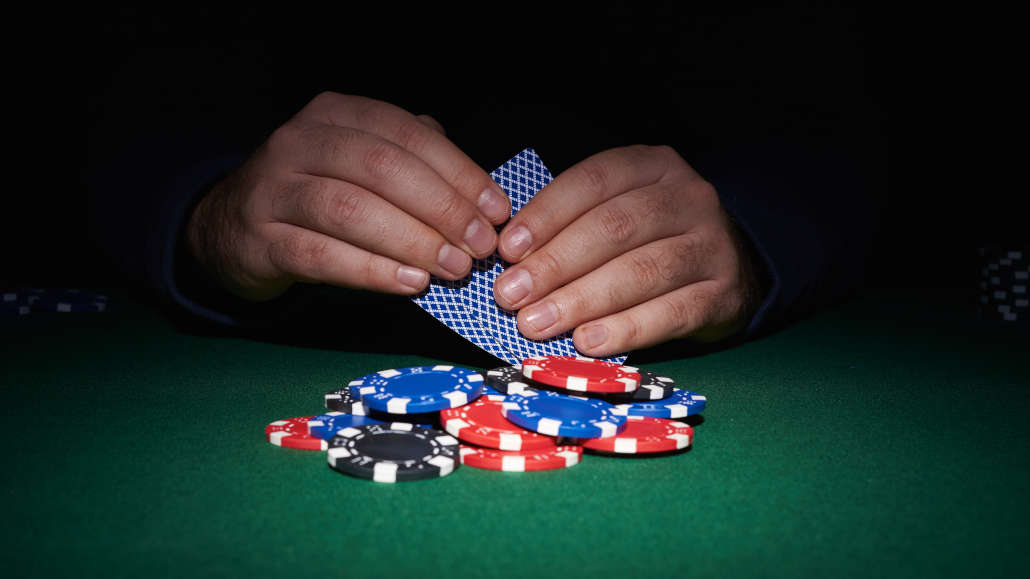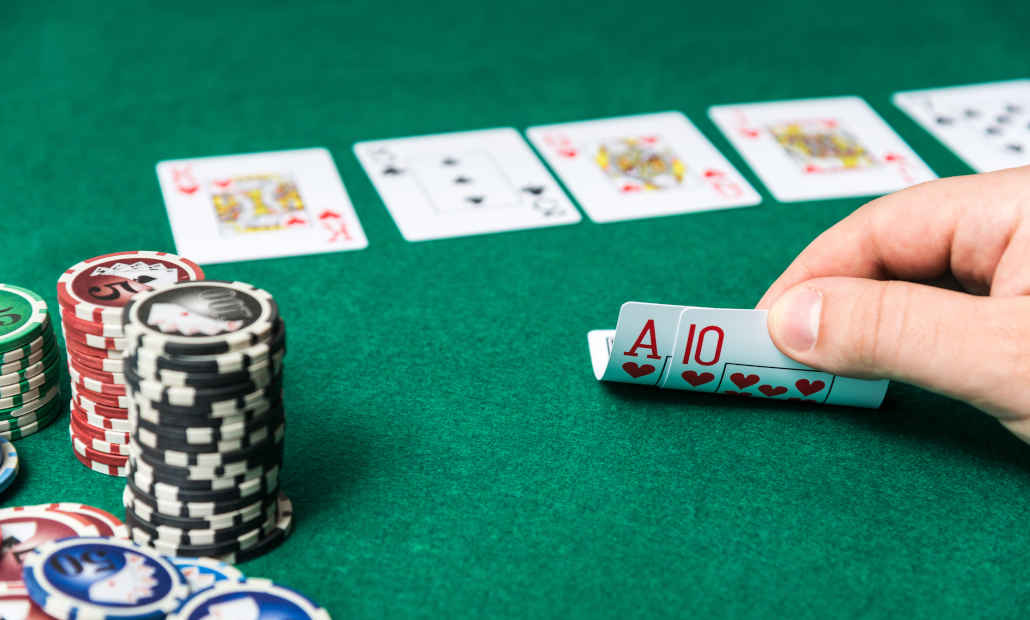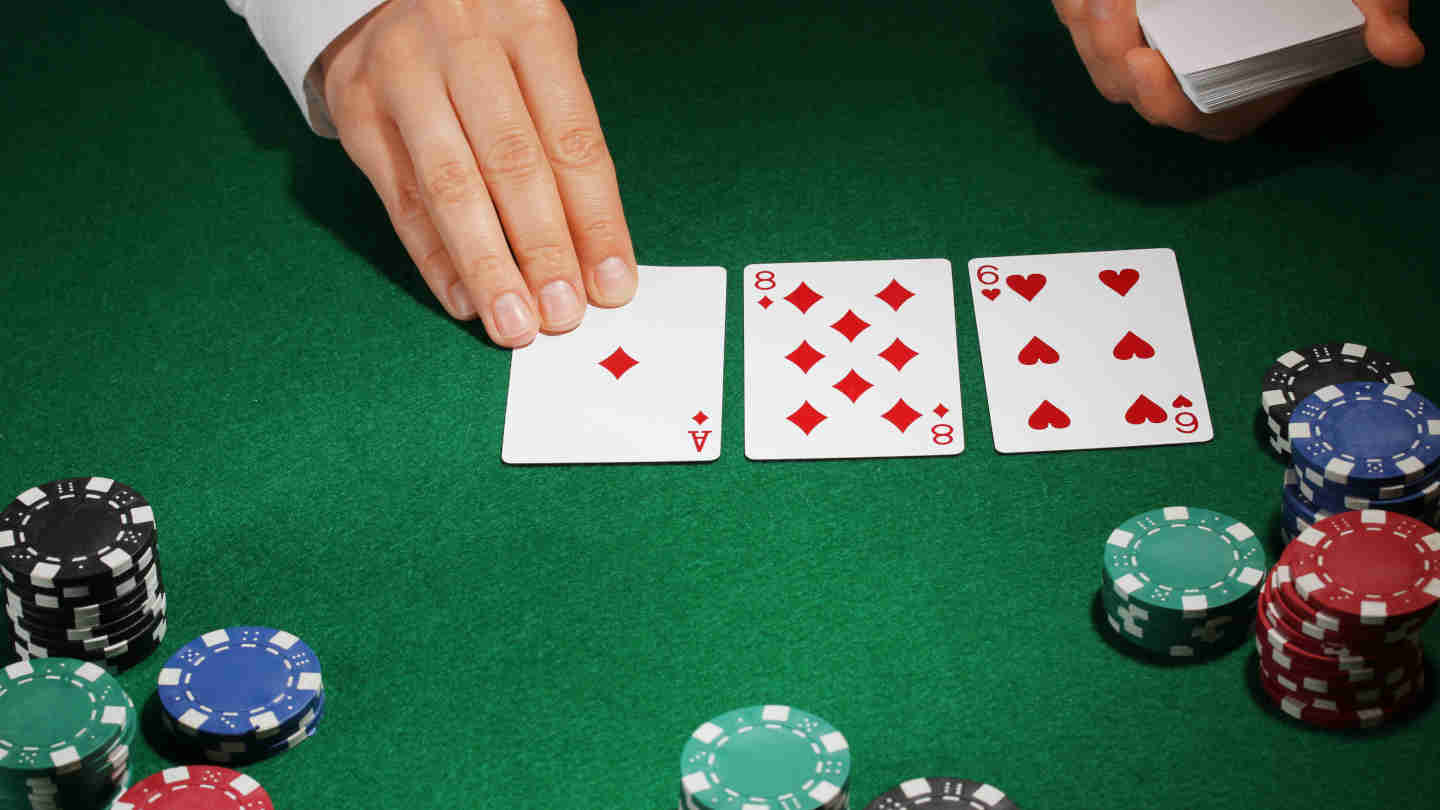Poker Ranges Explained – How to Think and Play Like a Pro

11 minutes
There was once a time in poker when even the best players in the world would try to guess and call out the exact two cards their opponent was holding.
Those days are long gone, as all the expert players now think about the game in terms of poker ranges, trying to identify the entirety of their opponents’ potential holdings and play effectively against it.
The concept of a poker range is one that often baffles poker newbies and old-school poker players who find it hard to grasp how they could possibly play against many different poker hands at the same time.
If you find yourself confused by poker ranges or don’t yet know what they are, keep on reading and allow me to teach you how to think about poker in terms of ranges instead of hands and take your game to the next level.
What Is a Poker Range?
A poker range, in the simplest of terms, is the collection of all possible hands a certain player can have in a certain situation.
Once a player is dealt two cards face down, his poker hands range includes all the hands that are possible, which means 100% of all potential holdings.
With each action a player takes, you are able to make certain assumptions about their range, which usually means you can take certain hands out of the player’s range.

For instance, once a player makes an opening raise, you can say with certainty (if he is a reasonable thinking player) that he does not have a hand like 73 or T4, as he would certainly fold these cards.
Similarly, if a player makes a 3-bet after facing a raise, you can safely assume that he has a strong hand the majority of the time, along with some bluffing hands that make sense for this situation.
The more you know about a player’s tendencies, the more you are able to determine his poker range and shrink it with each new action.
By the time the river is dealt, you may be able to define a player’s range very clearly and reasonably assume he has one of only a few hands that are still left in his poker range.
To make the concept of poker ranges more clear, players use what is known as the poker range chart, which is a matrix that contains every single possible suited and offsuit hand, as well as all pocket pairs.
On this chart, you can see every possible poker hand, and certain pieces of software allow you to manipulate this grid and use it to make hand range calculations.
Namely, poker solvers, which are used to determine game theory optimal (GTO) solutions, use the poker hand matrix to set the baseline for all further assumptions about the hand.
Since poker solvers are the main tools you want to use to learn the basic concepts of poker, you will need to understand the concept of poker ranges before you can start using them effectively.
Defining Poker Ranges Before the Flop
You now know that poker ranges are collections of all the hands that your opponents can have, but you may still be wondering how you can define someone’s range.
This is a very good question and one that is not always easy to answer. In fact, whenever you define a player’s range, you are doing some educated guessing. The more educated you are, the better.
Defining a player’s range of hands starts before the flop. On this street, the player can still have every possible hand in the poker range chart, and you need to start doing some eliminating.
The process of elimination starts when the player starts putting chips into the pot. Against most opponents, you will be able to start eliminating hands right away.

A player raising from an early position will never have weak offsuit hands like Q3 or 95, as these hands are trash that any thinking opponent simply mucks.
What’s even more, depending on stack sizes and the particular opponent’s tendencies, much stronger hands like A8 or K9 are still usually folded in early positions, and you can start to eliminate those as well.
The poker range of a player who calls the raise on the button will be significantly different from that of the player who calls the raise in the big blind and is incentivized by the better price he is getting on the call.
Similarly, a player who fires a 3-bet or a 4-bet will have a much tighter range made up of fewer poker hands than that of a player who simply opened the pot or limped in.
In most cases, the more action there is before the flop, the more you will be able to shrink a player’s poker range on that street before moving on to the flop.
Defining Poker Ranges After the Flop
Once the flop has been dealt, whether the pot is limped, single-raised, or 3-bet/4-bet, more information will start to come to light.
The players whose ranges you partially defined before the flop will start to make plays (checking or betting), which will give you more information about their potential holding.
For example, a player who called your preflop raise on the button will still have a fairly wide range. But now, let us consider the flop being dealt out A♠Q♠7♥. We fire out a c-bet and watch our opponent respond.
Note that your hand is irrelevant at this point, as you are trying to determine your opponent’s hand range, while I will talk about the construction of your own a bit later.
Once your opponent calls your c-bet on this flop, you can start taking some hands out of his range.
For example, it is likely that he will fold small pocket pairs like 22 or 55 on this flop, as well as a hand like 9♠8♠, 10♦9♦, etc.
Assuming our flop bet was relatively small, this will still leave any hand with an ace, a queen, and usually, a seven in the pot, along with a number of gutshot straight draws and all the flush draws.
The turn now rolls off a 4♦, a complete brick, and you continue for 60% of the pot, to which your opponent once again calls.
At this point in the hand, you can really start to define the player’s range. Most players will easily fold any one pair hand except a pair of aces on this board, along with all the gutshot straight draws.
This means that you can shrink your opponent’s range to:
- Pair of aces with x kicker
- A flush draw
- A gutshot straight draw with a flush draw
- A hidden A7s or 77
This is a fairly strong range made up of a lot of reasonably strong made hands and some great draws. Yet, it tells you a lot about what to do on the river.
When the river rolls off the 3♦, you are left with a decision to make. Should you bet, and how much should you make it?
You now know that your opponent mostly has hands that are weaker than two pair, and it’s unlikely he underplayed a hand like 77 on both the flop and the turn, given the flush draw.

This means that he either has a missed draw that he can’t really continue with or a weak top pair that will fear further bets.
A big overbet will likely get rid of all those hands, barring the occasional two pair made on the turn or river or an underplayed A7 or 77.
By using deduction and analyzing your opponent’s hand range, you are now able to make your river decision to target the very specific range of poker hands that your opponent can have.
While a player who is not thinking about the game might think this opponent still has a hand like KQ or 67 in his hand, you can safely assume that these hands were already folded on the flop or turn.
Furthermore, you are able to dismiss a hand like AA, QQ, or AQ, as there was no 3-bet before the flop or a raise on the flop or turn, which makes all of those hands very unlikely.
You can use this exact same line of thinking in every single poker hand you ever play and continue to shrink down your opponents’ ranges until you are left with some very clear decisions to make.
Building Your Own Poker Ranges
You want to play poker in an unpredictable and balanced way, which is why you also need to create ranges you will play in certain situations and stick to them quite rigorously.
This will not only make your game well-balanced and hard to play against, but it will also bar you from making silly mistakes caused by fatigue, tilt, or other factors that should not impact your play.
To start out, you want to build your preflop opening ranges, and these will depend heavily on the type of game you are playing.
For example, in tournament poker, you will need to build ranges for many different stack sizes, while in cash games, you will be able to use more consistent hand ranges as you will always be very deep.
In either case, you will need to have an opening range for each of the positions at the table and use this poker hands range as your baseline, only to be deviated from in very extreme conditions.
An example of when you can deviate from your opening range is when you are playing in a tournament, and the players in the blinds are very tight (allowing you to steal more from them), or an extremely aggressive player is sitting to your left (making it harder to pick up the blinds).
Similarly, you will want to build a 3-betting range against openers from each position, as well as a 4-betting range, etc.
Fortunately, a lot of this work has already been done, and some very optimal hand range charts are already readily available, making it your only job to memorize them.
By memorizing the poker hand charts you want to use in each preflop situation, you will have a well-balanced range going to the flop each and every time, which will make postflop play much easier.
Using Poker Ranges In-Game
You now know what a poker range is and how you can define one as the hand progresses, as well as how your own poker ranges should look if you have had the time to look at some preflop hand charts.
Now, I am going to give you a few tips on how you can think about poker hand ranges in-game that will help you make better decisions and crush your opponents:
- Which hands does he have: The first question you want to ask yourself is which potential hands your opponent can have. Never allow yourself to be stuck on one single hand or trying to guess which exact cards he has.
- Which hands did he already fold: As long as you are playing against a reasonable opponent, you should be able to definitely tell that certain hands are no longer in his range after a few rounds of betting.
- Is this guy a maniac: Against certain player types, you will have to assume their hand range is extremely wide on every street, regardless of the action. These guys can be hard to play against, but they will print you money in the long run as long as you don’t go too wild.
- Will he fold to my bet: Even if you know the exact range a player has, you still need to consider how they will answer to your bets. If a player can’t fold one pair, it will be hard to bluff him in most situations.
- What’s my most profitable play: There may be spots in which you know your opponent’s range is very weak, and you will have the option of betting, check/calling, and check/raising. Make sure to consider all your options and try to find the decision that’s most profitable.
Finding Weaknesses in Poker Ranges
While poker solvers may be playing GTO poker, that’s extremely well-balanced, no player in the world is able to mimic that.
What’s even more, most players in the real world are not even trying to mimic solvers and are playing extremely imbalanced across the board.
The fact that preflop hand charts are now so widely available does make many players’ preflop game more balanced, but most of them still play very exploitable after the flop.

One of the most common tendencies that players have after the flop is that they either bluff way too much or way too little, significantly changing their ranges as the hand goes down.
A player whose tendency is to bluff too much will often have nonsensical bluffs still in his range by the river, while the other kind will usually only have a few bluffs with a hand range heavily leaning towards value.
By understanding these types of tendencies in players, you will be able to exploit their poker hand ranges and make some extremely good decisions, whether they are to call off more bluffs or to fold even your most obvious bluff catchers.
While GTO poker may be an optimal solution against a random player in a vacuum, you can certainly do better than GTO by approaching each player individually and trying to define his range in accordance with his general tendencies.
Use Poker Ranges to Improve Your Game
If you haven’t been thinking about poker in terms of hand ranges, you may have a lot to learn, but learning this approach will greatly improve your game and allow you to crush your opponents in ways you weren’t able to do before.
Learning more about poker ranges will require you to get acquainted with poker solvers and other poker software, all of which will allow you to take your game to the next level.
Even simply learning how to utilize the basic preflop charts and deduct your opponents’ ranges based on their decisions will give you an edge, so I highly recommend spending more time learning about poker ranges and how you can apply them in your own game.
- Poker Squeeze Play – Which Hands Make the Most Sense for Squeezing? - August 10, 2023
- How to Play Low Pocket Pairs in Texas Hold’em - July 29, 2023
- How to Make Deep Runs in MTTs More Often - July 22, 2023















